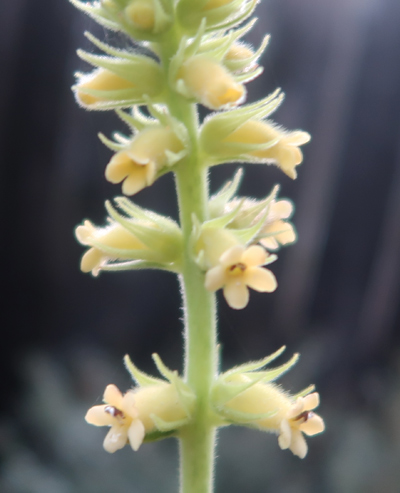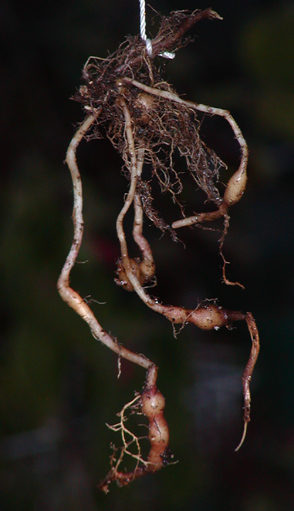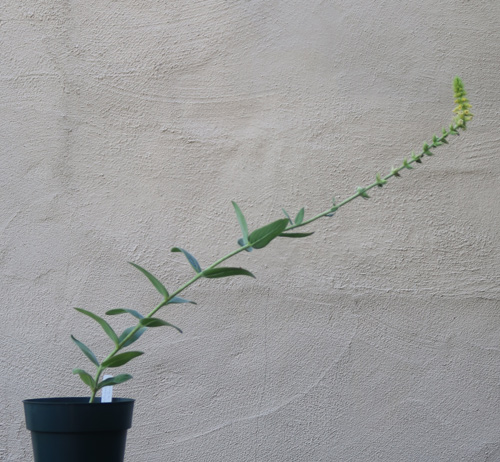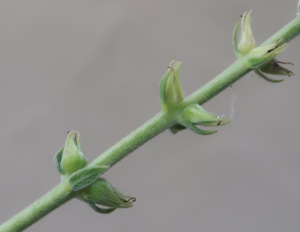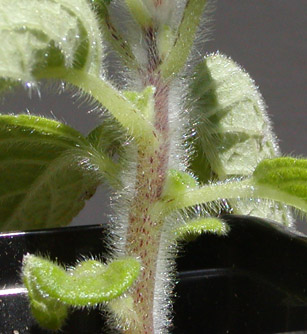Sinningia allagophylla
Sinningia allagophylla, one of the "meadow" species, has small red flowers on tall stalks.
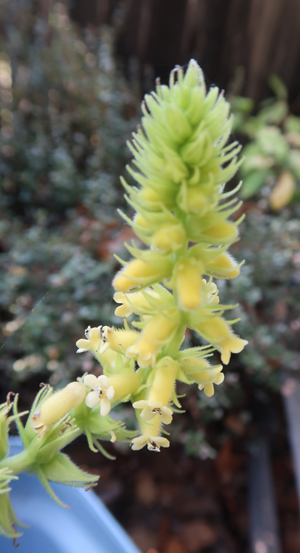
- Comparison to S. curtiflora
- This species on the cover
- Feature table
- External link
- Publication and etymology
This is one of the tall, sun-loving species. It has small, red, tubular flowers like those of Sinningia curtiflora.
The sharp-eyed reader will notice that the flowers to the left are not red. This variety of the species has "yellow" flowers. The yellow may well be the absence of red rather than a genuine yellow pigment.
That is, this may be a variety which, due to a mutation, can't make the red pigment. What we're seeing is the "background" tint, visible when the red pigment is absent.
